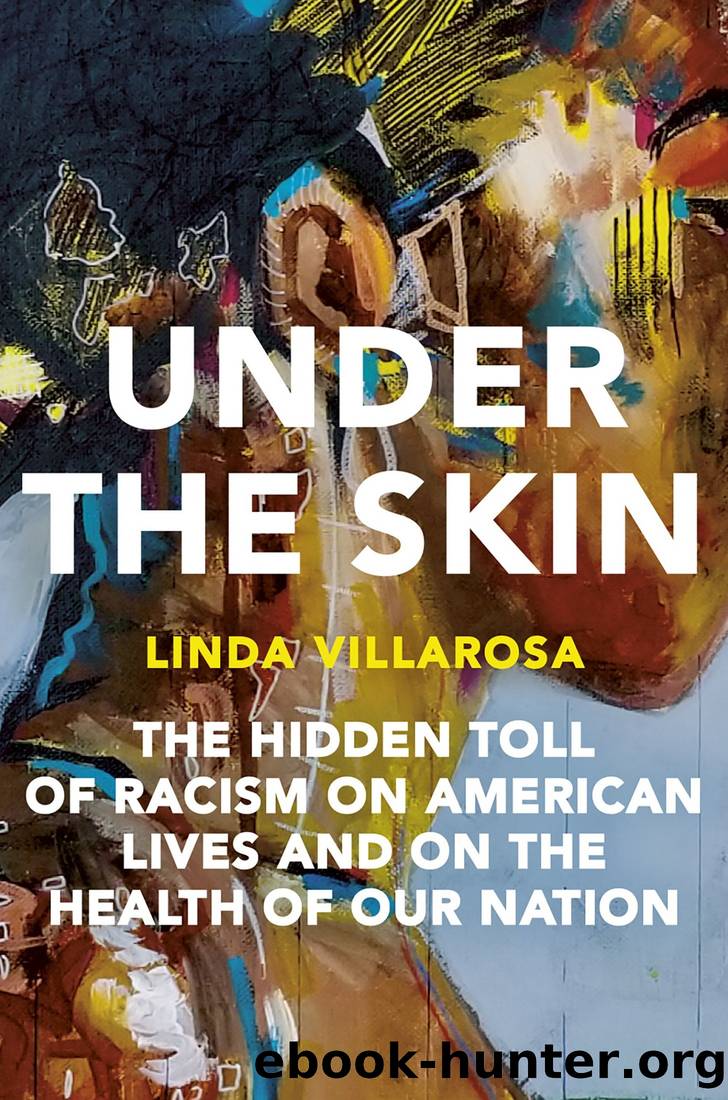Under the Skin: The Hidden Toll of Racism on American Lives and on the Health of Our Nation by Linda Villarosa

Author:Linda Villarosa [Villarosa, Linda]
Language: eng
Format: epub
ISBN: 9780385544887
Publisher: Knopf
Published: 2022-06-14T00:00:00+00:00
Chapter Eight
PUTTING THE CARE BACK IN HEALTH CARE: SOLUTIONS
In 1986, I was assigned to write about HIV/AIDS, then still known as gay-related immunodeficiency disease, or GRID, for Essence magazine. No one knew much about this mysterious disease except that it struck gay men and people who injected drugs. I was such a novice writer that I was surprised to receive this major assignment. I later found out that several more seasoned writers had turned it down, afraid of âcatchingâ the scary virus that was a death sentence for a growing number of people.
As part of my reporting, I went to the Bronx to interview a woman who had contracted the disease from her boyfriend, who had been addicted to heroin. Holding her nineteen-month-old daughter on her lap, she described the puzzling symptoms that had begun several months earlier. She was tired and had been losing more and more weight. I could see that her brown skin had a grayish tint, and she could barely hold up her head. I set my notebook aside and took the toddler from her as she continued to talk. The impish little girl, her hair in two fuzzy pigtails, looked at me and showed a gummy smile, and I saw that her mouth was lined with something white and furry.
Because of my inexperience as a medical journalist, our editor in chief paired me with her college biomedicine professor to walk me through the science of the illness. When I described the babyâs mouth to her, she identified the condition as a fungal infection called thrush, common among people with GRID. At that moment, I understood that this virus was eating away at both the woman and her daughter. By the time the story ran in the June 1987 issue of the magazine with the headline âNobodyâs Safe,â both the mother and her baby girl were dead.
Mine was apparently the first reported article about HIV/AIDS for an ethnic publication. It received praise and recognition and opened the eyes of many to HIV and its impact on African Americans, and it generated promises from Black leaders to take action. This piece also marked the moment I realized that these kinds of stories would be my lifeâs work. I had a responsibility to continue to use the knowledge I had gained to keep covering this disease. I wrote or edited several more articles on AIDS and also volunteered with the Black AIDS Institute to teach other journalists of color to report and write about the virus. Because Iâm an optimist, I assumed there would soon be an end to this terrible plague, and my work, in this area at least, would be finished.
Sure enough, in 1996, scientists discovered a lifesaving âcocktailâ of highly active antiretroviral drugs that could stop HIV in its tracks. With this new treatment, thousands of people experienced the Lazarus effect and were brought back from near death, and the AIDS mortality rate plummeted. In November 1996, a New York Times Magazine cover story, âWhen Plagues End,â announced that AIDS no longer equaled death but merely illness.
Download
This site does not store any files on its server. We only index and link to content provided by other sites. Please contact the content providers to delete copyright contents if any and email us, we'll remove relevant links or contents immediately.
| General | Discrimination & Racism |
Nudge - Improving Decisions about Health, Wealth, and Happiness by Thaler Sunstein(7261)
iGen by Jean M. Twenge(5166)
The Fire Next Time by James Baldwin(5025)
Adulting by Kelly Williams Brown(4241)
The Hacking of the American Mind by Robert H. Lustig(4093)
The Sports Rules Book by Human Kinetics(4081)
The Ethical Slut by Janet W. Hardy(4042)
Captivate by Vanessa Van Edwards(3732)
Mummy Knew by Lisa James(3523)
In a Sunburned Country by Bill Bryson(3376)
The Worm at the Core by Sheldon Solomon(3328)
Ants Among Elephants by Sujatha Gidla(3282)
Suicide: A Study in Sociology by Emile Durkheim(2908)
The Slow Fix: Solve Problems, Work Smarter, and Live Better In a World Addicted to Speed by Carl Honore(2843)
The 48 laws of power by Robert Greene & Joost Elffers(2818)
Humans of New York by Brandon Stanton(2694)
Handbook of Forensic Sociology and Psychology by Stephen J. Morewitz & Mark L. Goldstein(2606)
The Happy Hooker by Xaviera Hollander(2586)
The Tipping Point by Malcolm Gladwell(2565)
